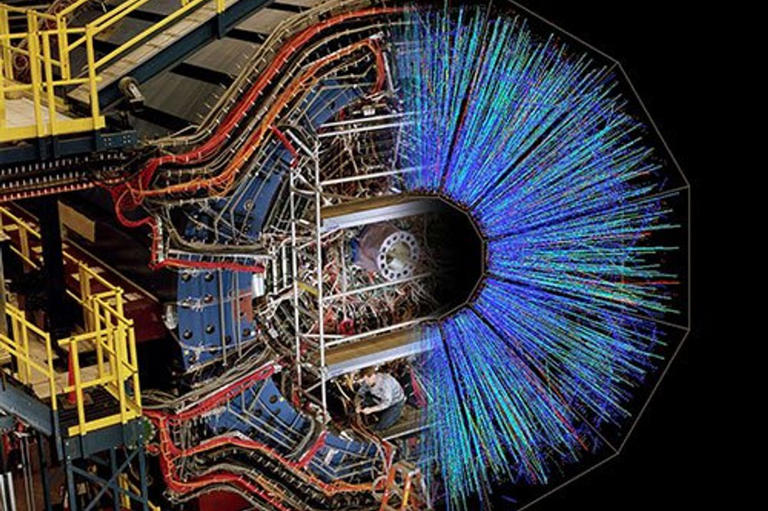Fusion Energy Spin-Off Technologies are not just about future energy; they’re already transforming industries today. Discover how advancements in fusion research are leading to groundbreaking innovations in propulsion, medical applications, industrial imaging, and nuclear waste handling.

© Photograph: Rich Crowder/TAE Technologies
Fusion Energy Spin-Off Technologies: Transforming Industries Today
Fusion Energy Spin-Off Technologies might sound like a futuristic concept, but they are already starting to make a significant impact across various sectors. While fusion power has long been promised as “30 years away,” the technology’s development is generating advancements that could benefit us much sooner. Here’s how the pursuit of fusion energy is creating ripple effects far beyond just generating power.
Advancements in Propulsion
Fusion Energy Spin-Off Technologies are revolutionizing propulsion systems. To achieve controlled fusion, researchers need to confine extremely hot gases using strong magnetic fields. The strength of these magnets is crucial for making fusion reactors practical and cost-effective. Companies like Tokamak Energy are at the forefront of this innovation. In 2023, they introduced high-temperature superconducting magnets that deliver magnetic fields much stronger than previous technologies.
These advanced magnets are not only vital for fusion reactors but also have applications in creating magnetohydrodynamic (MHD) drives. MHD drives use magnetic fields to generate thrust without any moving parts, which means fewer mechanical issues and greater efficiency. Historically, the MHD drive concept was explored but had limitations, such as slow speeds. However, with the new generation of magnets, there’s potential for significant improvements. For example, these drives could be used in marine applications, offering quieter and more efficient propulsion systems for ships, potentially reducing environmental noise pollution.
Medical Innovations
Another exciting aspect of Fusion Energy Spin-Off Technologies is their impact on medicine. TAE Power Solutions, a spin-off from TAE Technologies, has been exploring the use of fusion technology to advance cancer treatment. Specifically, they’re focusing on boron fusion. Boron can react with neutrons to produce energy that destroys cancer cells. This technology was initially limited by the lack of suitable neutron sources, but recent innovations in compact particle accelerators are overcoming this barrier.
These accelerators can generate focused neutron beams that are now being adapted for medical purposes. For instance, TAE Life Sciences is working on using these beams to target and destroy cancer cells with high precision. Additionally, Shine Technologies is producing lutetium-177, a radioactive isotope used in cancer treatment. This isotope is crucial for targeting cancer cells and monitoring treatment progress through imaging, thanks to its radioactive properties.
Industrial Imaging Breakthroughs
Fusion Energy Spin-Off Technologies are also making waves in industrial imaging. At Lawrence Livermore National Laboratory, researchers discovered that laser technology, initially developed for fusion research, could be used to accelerate particles to high velocities. This led to the creation of Focused Energy, a company dedicated to developing a powerful laser system capable of producing highly intense neutron beams.
These neutron beams can be used similarly to X-rays but are more penetrating, making them ideal for inspecting dense materials like concrete and steel. This technology has significant implications for civil engineering, allowing for better detection of issues such as corrosion in infrastructure. Additionally, Focused Energy’s laser method could improve the production of muons, particles with excellent penetrating power. This advancement could enhance our ability to study various geological and industrial processes more efficiently.
Nuclear Waste Management
Managing nuclear waste is another area where Fusion Energy Spin-Off Technologies are proving valuable. Focused Energy is working on a project with the German government to create a laser-driven neutron source for examining nuclear waste containers. This technology will help assess the condition of waste and improve its storage and safety.
Moreover, Shine Technologies is exploring how high-intensity neutron beams could transform nuclear waste into less harmful substances. For example, they aim to convert iodine-129, a long-lived radioactive waste product, into iodine-128, which has a much shorter half-life. This could potentially reduce the long-term challenges associated with nuclear waste management significantly.
Conclusion
The pursuit of fusion energy is leading to a variety of Fusion Energy Spin-Off Technologies that are already benefiting numerous fields. From propulsion and medical applications to industrial imaging and nuclear waste handling, the advancements being made in fusion research are having a transformative impact. These technologies are not only paving the way for future energy solutions but are also solving current problems and opening up new possibilities across various industries.
As we continue to push forward with fusion research, the technologies developed along the way promise to enhance our lives in numerous ways, proving that the benefits of fusion energy extend far beyond just producing clean power.
ALSO READ: